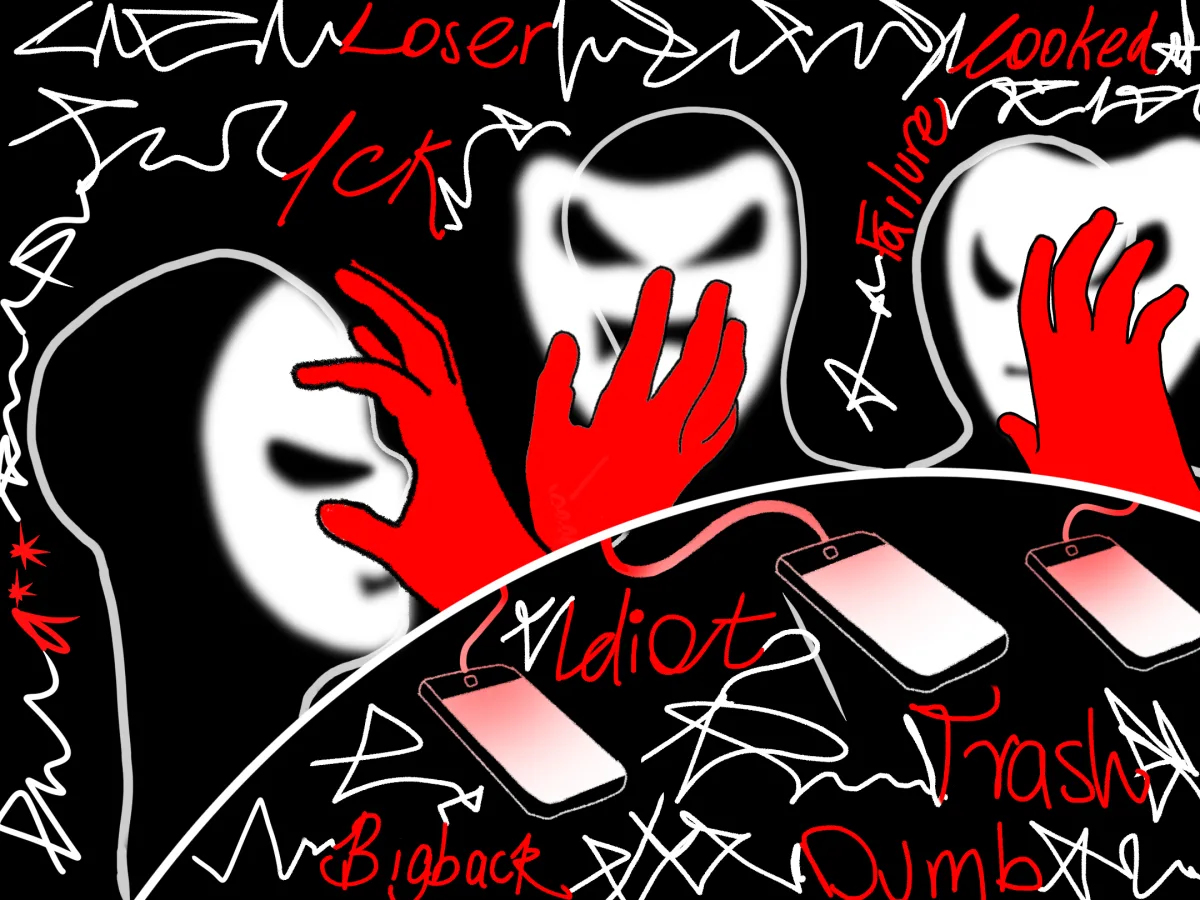OMG! She’s giving me the “ick.”
Two minutes ago, the girl who just spoke and the one who’s giving her the “ick” was just catching up on the drama from class. They were laughing and talking, and anyone who walked by would’ve thought that they were best friends. Deep down, however, they both know they’re sworn enemies.
Individuals are drawn to negativity, whether in person, in conversation, or when researching online. According to the Nieman Lab at Harvard in 2023, for an online news headline of average length, each additional negative word increased the click-through rate by 2.3%, whereas positive words decreased consumption rates.
In the past, several coming-of-age movies and shows have portrayed bullying as exclusively physical. However, the overarching term “bullying” now also encompasses the idea of cyberbullying. Statesman believes that face-to-face insults have been increasingly subtle, whereas online insults have become increasingly direct. Both forms of bullying ultimately create a toxic culture in which individuals feel pressured to conform to societal expectations regarding appearance and behaviors.
Depending on the relationship between two individuals, something that can be seen as insensitive to an outsider may be deemed as a joke between the two individuals; the same situation can be interpreted differently depending on an individual’s perspective and tolerance. Sometimes, an individual who feels targeted by what is supposed to be a joke may not speak up and instead will put up a tolerating facade.
It has also become difficult to distinguish between people who have your best interest at heart and those who put up a kind persona.An individual who might want to maintain relationships for personal gain, may try to protect their image and appear welcoming despite ill intentions. As individuals become increasingly driven by personal motives, they feel more conscious of their image and display an unauthentic version of themselves to avoid vulnerability.
In contrast, when looking at the toxic culture on social media, several “hate comments”—offensive comments meant to target an individual for particular characteristics—use excessively demeaning language. The prevalence of hate speech has been vast: surveys across several countries by the Anti-Defamation League, an organization aimed to combat discrimination, indicate that 42% to 67% of young adults observed ‘hateful and degrading writings or speech online,’ and 21% have been victims themselves.
The apparent presence of such comments can also make them be seen as excusable by commenters because of how normalized and widespread hate comments have become. In fact, according to the Cyberbullying Research Center, one in every four teens has experienced cyberbullying, and about one in six has been a perpetrator.
Because of the lack of proximity and personal connection between individuals on the Internet, commenters feel entitled to say what they want without considering the possible impact it may have for those on the receiving end. The prevalence of hate comments is further intensified by the anonymity that being online provides..
Psychologically, this anonymity also causes a phenomenon of disinhibited online behavior which is a phenomenon in which individuals lack restraint on their feelings when communicating online compared to in person. Thus, individuals feel more entitled to use harsh language or be more blunt online.
According to the National Institute of Health, many instances of disinhibited online behavior may occur not because people are unable to control themselves, but because they do not realize online communication requires self-control in the first place. This lack of self-control can be attributed to the perceived freedom from negative consequences.
On social media, an individual is less likely to receive a direct punishment from authorities, or have ownership for their actions. toxic behavior is much more rampant than in person. However, in real life, for instance, on a school campus, observance of any insults can result in being sent to a dean. The safeguard associated with online interaction promotes the prevalence and acceptance of hate.
In a study by the National Institute of Health, higher self-esteem and higher resilience were predictors of lesser concern with online hate. Additionally, public figures, more often than typical social media users, report receiving hate online. Ordinary social media users had lower resilience and lower self-esteem, and they were more concerned about receiving online hate. Ordinary people tend to care about each individual opinion a lot more compare d to public figures who typically disregard individual comments as long as the overall public opinion remains positive.
The toxic culture prevalent in society can be attributed to evolving communication, especially the increase in social media usage. Still, there are ways to reduce the presence of toxicity. Statesman believes that instead of conforming to the norms of excessively hating on social media or creating a facade to avoid expressing one’s true self, individuals should be more inclined to approach situations with empathy and consider alternate perspectives before jumping to conclusions.
One should take time to reflect and consider alternatives rather than immediately reacting to unpleasant situations allowing for more authenticity and favorable responses. This permits for more compassionate and more genuine interactions. Being more proactive in choices online and in person allows for an environment in which healthier and more meaningful connections can flourish.


